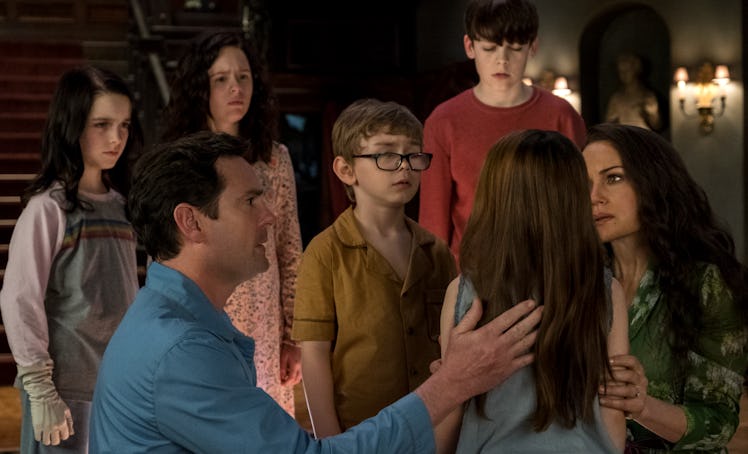
The Original Ending For 'The Haunting Of Hill House' Was So Much Darker
Netflix's latest spine-tingling horror series The Haunting of Hill House is definitely not short on scares, but it actually almost had one more really massive fright in the final moments of its Season 1 finale... except it got cut at the very last minute. And the original ending of The Haunting of Hill House was so different from the one that aired that it would have completely changed everything about the series.
Spoiler alert: Don't read on if you have not yet finished all of The Haunting of Hill House yet. Although it may look like a scare-a-minute, ghost-filled horror series before you click play, it only takes a few episodes to realize that The Haunting of Hill House is actually much more of a fractured family drama than anything else. It is that unexpected level of care that the show invokes viewers to feel for each member of the Crain family that actually makes its surprisingly sweet and quaint ending scene feel correct.
In the final moments of the season, Hugh Crain is able to convince the ghost of his wife Olivia to open the door to Hill House's torturous Red Room, freeing their children to return to the real world. Then, we get an unexpected music change, as a wistful indie folk tune ("If I Go, I'm Going" by Gregory Alan Isakov) underscores Steve Crain narrating a passage about love from his book, and we get a montage of everyone finally moving forward to lead happier lives. Shirl comes clean about her affair to Kevin, Luke celebrates his sobriety with his family, Theo ditches her gloves and moves in with Trish, and Steve makes things right with Leigh. But, this almost was not how the show was originally going to end.
The Haunting of Hill House creator Mike Flanagan told The Hollywood Reporter that originally, this cheerful montage of the Crain children all leading happy lives was going to be undercut by the reveal that it was all a hallucination and they were still trapped in the Red Room.
Apparently, Flanagan was planning to include the window of the Red Room in the background of all these happy montage scenes, as a signal to the viewers that the poor, doomed Crain children were actually never saved from the Red Room. But right before they shot those finale scenes, Flanagan had a change of heart and decided to give the Crains a much-deserved happy ending:
We toyed with the idea for a little while that over that [Steve’s] monologue, over the image of the family together, we would put the Red Room window in the background. For a while, that was the plan. Maybe they never really got out of that room. The night before it came time to shoot it, I sat up in bed, and I felt guilty about it. I felt like it was cruel. That surprised me. I’d come to love the characters so much that I wanted them to be happy. I came in to work and said, "I don’t want to put the window up. I think it’s mean and unfair." Once that gear had kicked in, I wanted to lean as far in that direction as possible. We’ve been on this journey for 10 hours; a few minutes of hope was important to me.
Of course, some horror fans might have actually preferred this morbid original ending, but for other viewers, the happy ending that the show went with felt like the only fitting send-off for a family that we have had to watch endlessly suffer for ten hours.